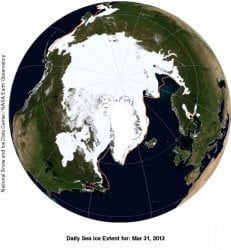Wrong answer.So why don`t you tell me why every city under these "aerosol" domes as you call them, is warmer than the surrounding country side?
Because concrete and asphalt are dark, dumbass. And because they don't evaporate moisture.
Again, 4rth grade level science, and yet you can't grasp it.
Concrete has an albedo of 0.5 and trees have an albedo of 0.09 to 0.18 and worn asphalt has an albedo of 0.12.
How much "black asphalt" do you get to see from an airplane that flies over a city?
Water vapor is a "greenhouse gas" is it not? So then with the lower albedo and the higher moisture air layer over the forest, the forest should be warmer than the city according to your AGW oracle model religion...but it isn`t !...for a good reason that your religion keeps downplaying if not outright denying.And because they don't evaporate moisture.
So what`s wrong with your religion`s testament ?
It`s 4rth grade level "science" as in the PBS cat in the hat TV show for little kids, can`t you grasp it ?
So try again dimwit.
Idiots like you are the reason that made Obama realize that the school system has been producing poor results and needs re-vamping.
Because you don`t have what it takes to do the math how much heat is transferred by convection.
You failed because you prefer to be spoon fed like Roy Spencer`s "Virginia" under the "radiation blanket" which keeps her warm in her bed while he`s reading her a story from the AGW bed time story book.
****************************************************************************************
Here is the right answer why cities under a smog dome of airborne particulate are hotter:
Temperature Inversion Layers

A layer of haze covers the Sydney, Australia skyline.
Inversion layers are significant to meteorology because they block atmospheric flow which causes the air over an area experiencing an inversion to become stable
Normally, air temperature decreases at a rate of 3.5°F for every 1000 feet (or roughly 6.4°C for every kilometer) you climb into the atmosphere. When this normal cycle is present, it is considered an unstable air mass and air constantly flows between the warm and cool areas.
During an inversion episode, temperatures increase with increasing altitude. The warm inversion layer then acts as a cap and stops atmospheric mixing. This is why inversion layers are called stable air masses.
http://www.enotes.com/atmospheric-inversion-layers-reference/atmospheric-inversion-layers
So tell us again how the "Chinese aerosol effect" is supposed to account for the missing heat that these stupid models had forecast
Denver's "brown cloud," the haze of air pollution that hangs over the city, is kept in place by atmospheric inversion layers. © Ted Spiegel/Corbis. Reproduced by permission.
Whenever an anomaly exists in the atmosphere in which an increase in temperature, humidity, or precipitation occurs where a decrease would be expected, there is an inversion, or reversal. An atmospheric inversion most commonly refers to temperature inversion where the temperature increases rather than decreases with increasing altitude.
Normally air temperature decreases with altitude at a rate of about 3.38°F (1°C) per 59 feet (180 m) because since the Sun's heating effect is greatest at the Earth's surface. There are three factors that alter this rate, causing the temperature to rise within the first few hundred meters of the ground. Inversions can occur as a result of radiative, or direct, cooling from the earth's surface. This occurs at night when the ground cools more rapidly than the air above it. The effects of an inversion are thus greatest during early morning, usually the coolest part of the day. Inversions also occur as a result of subsidence (sinking) of air in an anticyclone, or high pressure system, where the descending air warms adiabatically,
The mere presence of a city or factory often creates a microclimate of its own, creating a pocket of warm air within the cool ground layer. Smoke from a stack, instead of escaping upward or laterally, will descend to the ground, delivering a direct dose of pollution to residents of the area.
Last edited:





